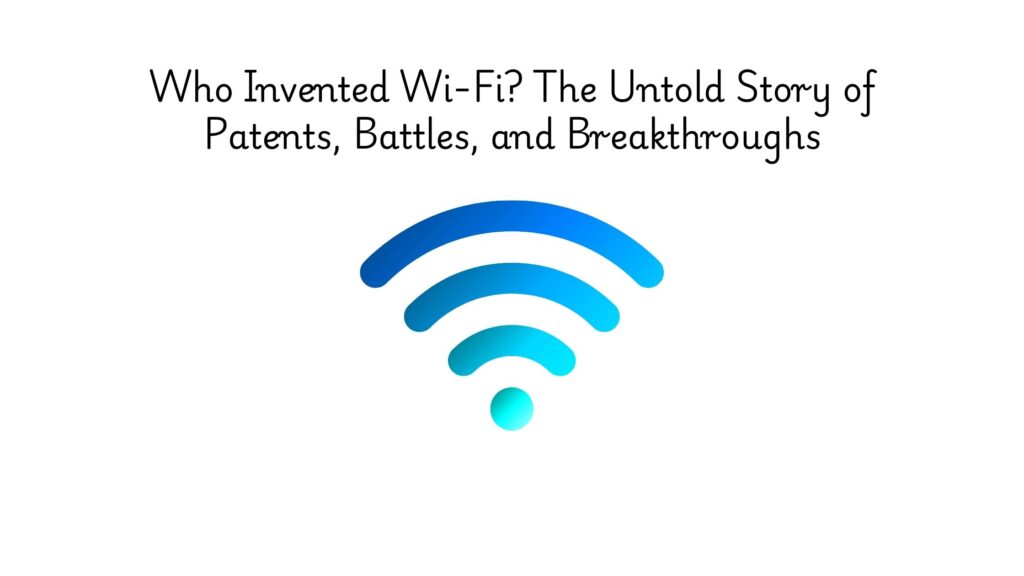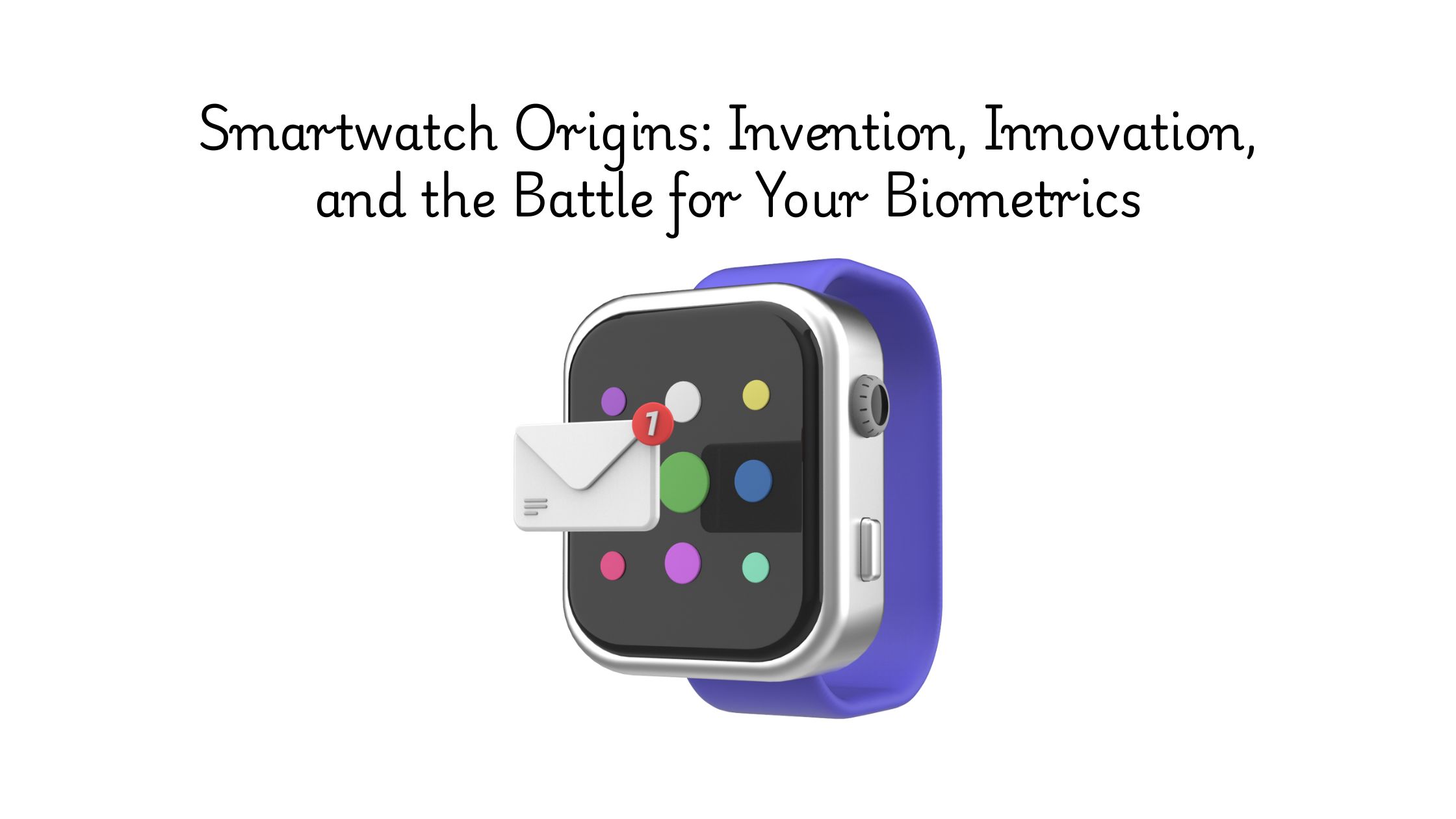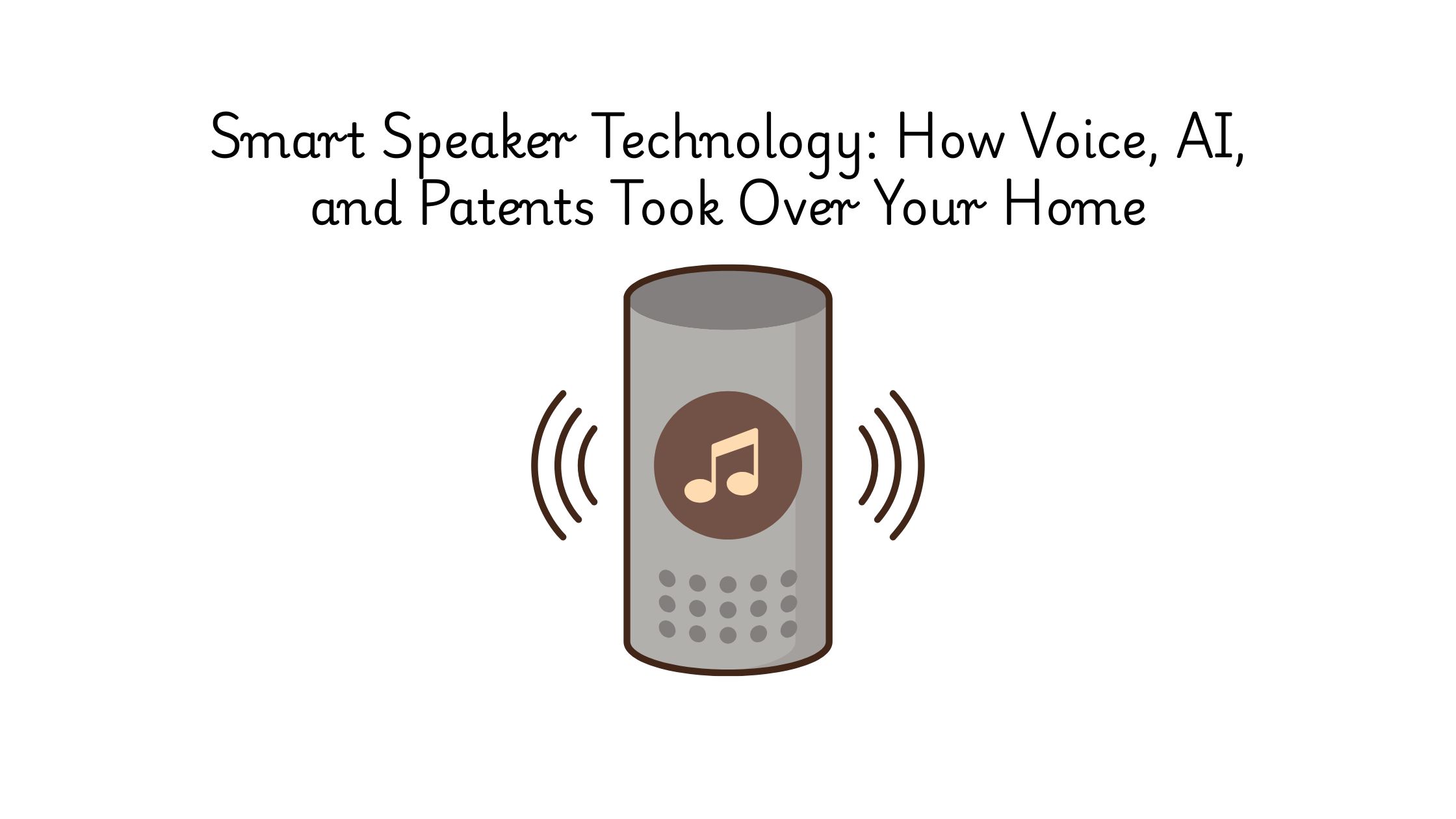You’re probably reading this connected over Wi-Fi. So is your smartwatch. Your printer. Your fridge. Your kid’s iPad. Your neighbor’s doorbell. Even the plane you flew last month was dishing out 802.11 signals mid-air.
But if you asked people where Wi-Fi came from, most would shrug. Some might say Silicon Valley. Others might mumble something about NASA or DARPA. The truth is that Wi-Fi wasn’t the work of a single inventor or lab. It was the result of breakthroughs made over decades across continents.
But one of the most critical breakthroughs came in Australia, and it started with a broken promise, a blackboard sketch, and a group of scientists trying to detect evaporating black holes.
In 1992, a team at CSIRO (Commonwealth Scientific and Industrial Research Organisation) cracked a way to transmit high-speed data over radio waves without destructive interference. It was this invention that made fast, stable, indoor wireless possible, and it later became one of the most valuable patents in tech history.
The patent was granted in 1996 as US Patent No. 5,487,069, titled “Wireless LAN”. But this was just the beginning of multiple infringement suits. Before we get into that, let’s look at this infographic where the CSIRO team explains how their breakthrough helped shape the Wi-Fi we know today.
Source – CSIRO
The Great Wi-Fi Patent War: How CSIRO Took on Tech’s Biggest Names?
Most people view Wi-Fi as an open standard: free, universal, and omnipresent. However, its journey was marked by intense legal battles over intellectual property rights.
At the heart of this conflict was US Patent No. 5,487,069, which detailed a method to transmit high-speed data over radio waves indoors reliably. This innovation addressed the challenge of radio signals reflecting off walls and furniture, causing interference. CSIRO’s solution effectively mitigated this issue using advanced mathematical techniques.
However, there was one challenge.
As Wi-Fi technology gained global traction, numerous tech companies incorporated CSIRO’s patented method into their devices without obtaining licenses. Recognizing the widespread unauthorized use, CSIRO initiated legal actions to protect its intellectual property.
Legal Actions and Settlements
Beginning in 2005, CSIRO pursued litigation against major tech companies for patent infringement. While companies tried to fight back, the patent was upheld in court. Notable developments include:
- 2009 Settlements: CSIRO reached agreements with 14 companies, including industry giants such as HP, Microsoft, Intel, Dell, Netgear, Toshiba, 3Com, Nintendo, D-Link, and Belkin. These settlements collectively amounted to over $200 million.
- 2012 Settlements: CSIRO secured an additional $220 million from settlements with companies like AT&T, Verizon, T-Mobile, Lenovo, Acer, and Sony.
By the end of 2012, CSIRO had amassed approximately $430 million in total from these settlements and licensing deals. This achievement highlighted the agency’s commitment to safeguarding its innovations and underscored the global reliance on its groundbreaking work.
This series of legal victories not only validated CSIRO’s contributions to wireless technology but also set a precedent for research institutions worldwide to defend their intellectual property rights actively.
However, this invention by John D. O’Sullivan, Graham R. Daniels, and their team was not really the origin of Wi-Fi.
Who Really Invented Wi-Fi? Debunking the Myths, Tracing the Truth
At some point, you may have heard a surprising claim: “Wi-Fi was invented by a Hollywood actress.”
It’s one of those stories that sounds too good to be true. And like most legends, it’s partly based on fact, partly on confusion.
The Hedy Lamarr Myth: The Actress Who Invented Wi-Fi?
In the 1940s, actress Hedy Lamarr, famous for her roles in Samson and Delilah and Algiers, teamed up with composer George Antheil to co-invent a system for secure radio communication. Their idea was to rapidly switch frequencies during transmission to prevent enemies from jamming Allied torpedoes during WWII.
The result was US Patent No. 2292387, granted in 1942. This concept, called frequency-hopping spread spectrum, was ahead of its time. And yes, it did influence modern wireless technologies, including Bluetooth and CDMA.
But here’s the truth: Wi-Fi does not use frequency hopping. It uses OFDM (Orthogonal Frequency-Division Multiplexing), a different method altogether.
So while Hedy Lamarr did co-invent a wireless communication technique, calling her the “inventor of Wi-Fi” is like calling the Wright brothers the inventors of jumbo jets.
It’s a poetic story. But that’s not the whole story.
So, Who invented Wi-Fi?
Wi-Fi, as we know it today, is the product of decades of innovation by many different people solving different problems. Here’s the breakdown of key contributors:
| Contributor | Role |
| ALOHAnet (1971, University of Hawaii) | First wireless packet data network using radio waves |
| IEEE Working Group (1990s) | Standardized the 802.11 protocol that became the foundation for modern Wi-Fi |
| CSIRO (Australia, 1992–1996) | Solved the interference problem in indoor wireless using patented mathematical models |
| Lucent Technologies, Apple, Symbol, 3Com (1997–2000) | Built and commercialized early Wi-Fi devices for consumers and enterprises |
| Hedy Lamarr & George Antheil (1942) | Invented frequency-hopping communication, influencing future wireless standards (not Wi-Fi directly) |
In short, Wi-Fi wasn’t invented. It was assembled. Piece by piece. Lab by lab. Patent by patent.
The Patents That Assembled Wi-Fi: 1970 to 1995
The evolution of Wi-Fi can be traced back to a series of pioneering inventions that enabled wireless data transmission, spectrum efficiency, and local network integration long before consumer routers became household staples.
To trace this evolution, we used the Global Patent Search tool, which semantically matches plain-English technology descriptions to historically relevant patents across global databases.
We entered the query: “Wireless technology that connects devices to local networks and the internet via radio signal” and analyzed filings between 1970 and 1995 to uncover early innovations behind modern wireless networking.

Source: GPS
Here’s what we found: From ALOHAnet’s random access protocol to early DECT-based infrastructure systems, these 15 patents laid the foundation for modern Wi-Fi standards like IEEE 802.11. Below is a chronological list of the most foundational patents and why each one mattered.
| Priority Date | Patent Number | Title | Why It Matters? |
| 1978-04-20 | CA1123962A | Computer Communication Network Adapter | Describes coaxial-cable based data networking; laid early groundwork for LAN architectures, which Wi-Fi later wirelessly extended. |
| 1983-09-02 | JPS6053357A | Data Transmission Equipment | One of the earliest wireless terminal concepts; transmitted data over radio links, bypassing wired infrastructure. |
| 1985-12-24 | CA1267448A | Communication System | Introduced remote data services using existing broadcast networks and dial-up links; a precursor to wireless messaging and telemetry. |
| 1991-07-31 | US5463623A | Integrated Wireless Telecommunication and Local Area Network System | Integrated LAN and ISDN capabilities into a shared wireless system; paved the way to high-speed wireless office networking. |
| 1991-12-24 | US5461627A | Access Protocol for a Common Channel Wireless Network | Proposed robust wireless access protocols for data and voice; enabled battery-efficient wireless data networks using microwave signals. |
| 1992-06-30 | EP0576968A3 | Communication System for Multiservice Terminals in a Local Area Network | Described multimedia services over LANs with integration of narrowband and voice; anticipating Wi-Fi’s multimedia capabilities. |
| 1993-04-21 | JPH07115422A | Wireless Network System Using a Spread Spectrum Communication Method | One of the earliest spread-spectrum wireless LAN implementations; critical for interference resistance in Wi-Fi. |
| 1993-12-15 | US20050159179A1 | Adaptive Omni-modal Radio Apparatus and Methods | Introduced flexible multi-protocol wireless communication; a foundational idea for dual-band and multi-mode Wi-Fi devices. |
| 1994-06-30 | CN1129996A | Summing Network | Proposed network-wide integration of radio transmitters and shared antennas; key concept behind multi-AP mesh Wi-Fi networks. |
| 1994-07-29 | KR960006394A | Nodes and Methods for Communication Within a Network | Enabled internetworking between wireless and wired nodes; cornerstone for modern Wi-Fi-to-Ethernet bridging. |
| 1994-10-07 | US5598407A | Cordless Local Area Network Having a Fixed Central Control Device | Implemented wireless LAN under DECT standard with central controller; mirrored Wi-Fi’s AP-client model. |
| 1995-03-15 | DE4408794A1 | Mobile Radio Communication System | Proposed integration of computing and wireless transmission in vehicles; an early example of mobile Wi-Fi environments. |
| 1995-05-31 | AU5810396A | Universal Mobile Telecommunication System | Laid groundwork for converging voice and data over wireless networks; a vision later realized through Wi-Fi calling. |
| 1995-06-27 | CN1148311A | Radio Communication System | Provided a radio base station-to-network communication model with control signaling; conceptual predecessor to Wi-Fi routers. |
| 1995-10-24 | DE19539507A1 | Digital Mobile Telephone With Digital Radio Interfaces | Demonstrated DECT-based data transmission through mobile phones; foreshadowed convergence of cellular and Wi-Fi interfaces. |
The Road to Wi-Fi: Milestones That Made It Mainstream
Wi-Fi can be best described as a puzzle, built piece by piece, protocol by protocol.
Each breakthrough solved a different part of the problem. From early radio experiments to the blazing speeds of Wi-Fi 6 and 7, this is how the tech we now take for granted came to life.
Let’s walk through the key milestones:
| Milestone | Year | What Happened | Why It Mattered |
| ALOHAnet – University of Hawaii | 1971 | The first computer network to use wireless radio communications | ALOHAnet proved you could send data through the air, not just voice. It directly influenced Ethernet and, later, the 802.11 Wi-Fi protocol. |
| WaveLAN by NCR/AT&T | 1991 | One of the first commercial wireless LAN products | WaveLAN became the hardware foundation for early Wi-Fi, and its tech was adopted into the first IEEE 802.11 standard. |
| IEEE 802.11 standard introduced | 1997 | The first official Wi-Fi protocol, offering 2 Mbps speeds | This was the industry’s first attempt to standardize wireless networking so different vendors could build compatible devices. |
| 802.11b approved + “Wi-Fi” brand launched | 1999 | Boosted speeds to 11 Mbps; Wi-Fi Alliance was formed to test/certify devices | This is when Wi-Fi really took off. 802.11b made it fast enough for practical home/office use, and “Wi-Fi” became a household word. |
| 802.11g standard released | 2003 | Increased speeds to 54 Mbps while staying compatible with 802.11b | The combination of speed + compatibility helped Wi-Fi dominate homes, cafes, and enterprises in the 2000s. |
| 802.11n (Wi-Fi 4) | 2009 | Introduced MIMO (multiple antennas), boosting range and speeds up to 600 Mbps | This was a massive leap. Wi-Fi started competing with Ethernet for real-world performance, especially in large offices. |
| 802.11ac (Wi-Fi 5) | 2014 | Added faster 5GHz band support and beamforming | Great for video streaming, gaming, and office networks. Helped phones and laptops get faster Wi-Fi with less interference. |
| 802.11ax (Wi-Fi 6) | 2019 | Introduced OFDMA and MU-MIMO for better multi-device handling | Designed for crowded spaces like homes, stadiums, and airports. Made Wi-Fi faster, smarter, and more energy-efficient. |
| Wi-Fi 7 begins early rollout | 2024 | Unlocks multi-gigabit speeds, ultra-low latency | Perfect for VR, AR, cloud gaming, and high-performance enterprise networks. This is Wi-Fi stepping into a future of real-time everything. |
While most people think of Wi-Fi as one technology, it evolved in stages.
Each generation:
- Solved new technical challenges (interference, congestion, compatibility)
- Responded to shifts in how we use devices (phones, tablets, smart homes)
- Was built on patent-protected innovations that changed the game
And behind nearly every leap was a mix of standards bodies, chipset makers, national labs, and global companies pushing the tech forward.
The Technologies That Power Wi-Fi and the Patents Behind Them
Behind every leap in Wi-Fi performance, faster speeds, more devices, and better range is a mountain of patents.
According to recent analyses, Wi-Fi 6 and 7 alone account for over 20,000 patents across thousands of families. These patents cover the technologies that make modern wireless communication possible.
Let’s break it down.
Patent Volume by Wi-Fi Generation
| Wi-Fi Generation | Standard | Approx. Patent Families | Focus Technologies |
| Wi-Fi 4 | 802.11n (2009) | ~2,000+ | MIMO, frame aggregation, power saving |
| Wi-Fi 5 | 802.11ac (2014) | ~4,000+ | Beamforming, wider channels, 5GHz band |
| Wi-Fi 6 | 802.11ax (2019) | ~10,854+ | OFDMA, MU-MIMO, BSS coloring |
| Wi-Fi 7 | 802.11be (2024+) | ~11,500+ | Multi-Link Operation (MLO), 320 MHz channels, 4096-QAM |
Now, let’s take a look at the key technologies behind the evolution of this technology
Key Technologies
| Technology | Why It Matters | Impact Area |
| MIMO (Multiple Input, Multiple Output) | Increases speed and reliability by using multiple antennas | Core to Wi-Fi 4 and beyond |
| OFDMA (Orthogonal Frequency-Division Multiple Access) | Allows efficient multi-user access and low latency | Enables Wi-Fi 6 performance boost |
| Beamforming | Directs signals to where they’re needed, improving range and clarity | Enhances Wi-Fi 5 and 6 signal quality |
| Power Saving (Target Wake Time) | Reduces energy usage in mobile devices | Critical for phones and IoT |
| Multi-Link Operation (MLO) | Allows devices to use multiple bands at once | Cornerstone of Wi-Fi 7 |
| Compatibility Protocols | Ensures new standards work with old networks | Smooth transition across generations |
Each of these technologies is protected by hundreds of interrelated patents. Together, they:
- Define what each Wi-Fi generation can do.
- Drive licensing and litigation battles (like CSIRO’s).
- Influence hardware design by Qualcomm, Broadcom, Intel, and others.
- Determine who controls the wireless future.
So, while no single company “owns” Wi-Fi, patents are the currency of power in how fast, secure, and accessible wireless networks become.
Keeping the Peace in the Wi-Fi Industry: Patent Pools That Make It Work
With tens of thousands of patents tied to Wi-Fi, the risk of chaos is real. Licensing could become a legal minefield. Innovation could stall. But to avoid that, the industry has leaned on something smart: patent pools.
These pools combine essential patents from multiple companies and offer them as a single package, making it easier (and cheaper) for manufacturers to build standards-compliant devices without stepping on a legal landmine.
Some of the key Wi-Fi Patent Pools include:
- Sisvel Wi-Fi 6 Pool: Includes patents from Huawei, SK Telecom, Philips, and others. Offers licenses for key technologies in 802.11ax (Wi-Fi 6).
- Via Licensing 802.11 Pool: Focused on earlier Wi-Fi standards. Aims to simplify access to foundational patents in 802.11a/b/g/n/ac.
Even with these pools in place, Wi-Fi patent licensing is still a dense, evolving space. Not every SEP holder joins a pool, and enforcement still happens, especially as new standards roll out.
Want to Explore the Patents Powering Wi-Fi?
Wi-Fi is everywhere. But the technology behind it is layered, complex, and buried in thousands of patents filed over decades. From beamforming to multi-link operation, it’s hard to know where one breakthrough ends and the next begins.
That’s where Global Patent Search comes in.
Unlike traditional tools that expect you to know exact patent numbers or standard codes like “802.11ax,” GPS lets you describe an idea in plain language and then maps it to relevant patents.
- Want to find patents filed before a certain technology became mainstream?
- Want to see what was invented after a key breakthrough like OFDMA or MIMO?
- Just want to know who owns the core ideas behind indoor interference reduction, beam steering, or multi-band switching.
You can do all that without needing to be a patent analyst or standards expert.
Just describe what the technology does. GPS will handle the rest.
It’s one of the few tools that actually understands the idea behind the innovation, not just the keyword. Try the tool here: Global Patent Search.




